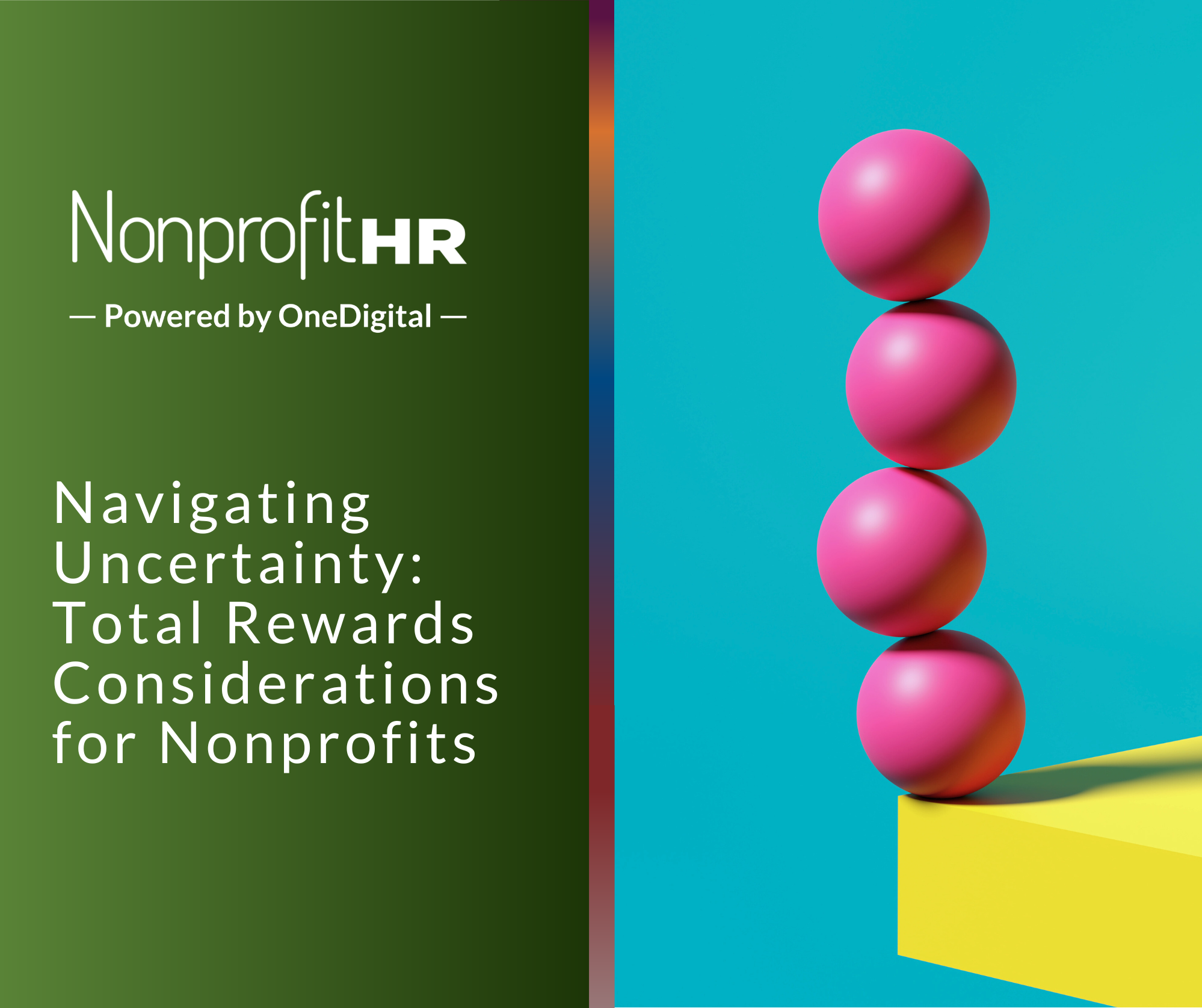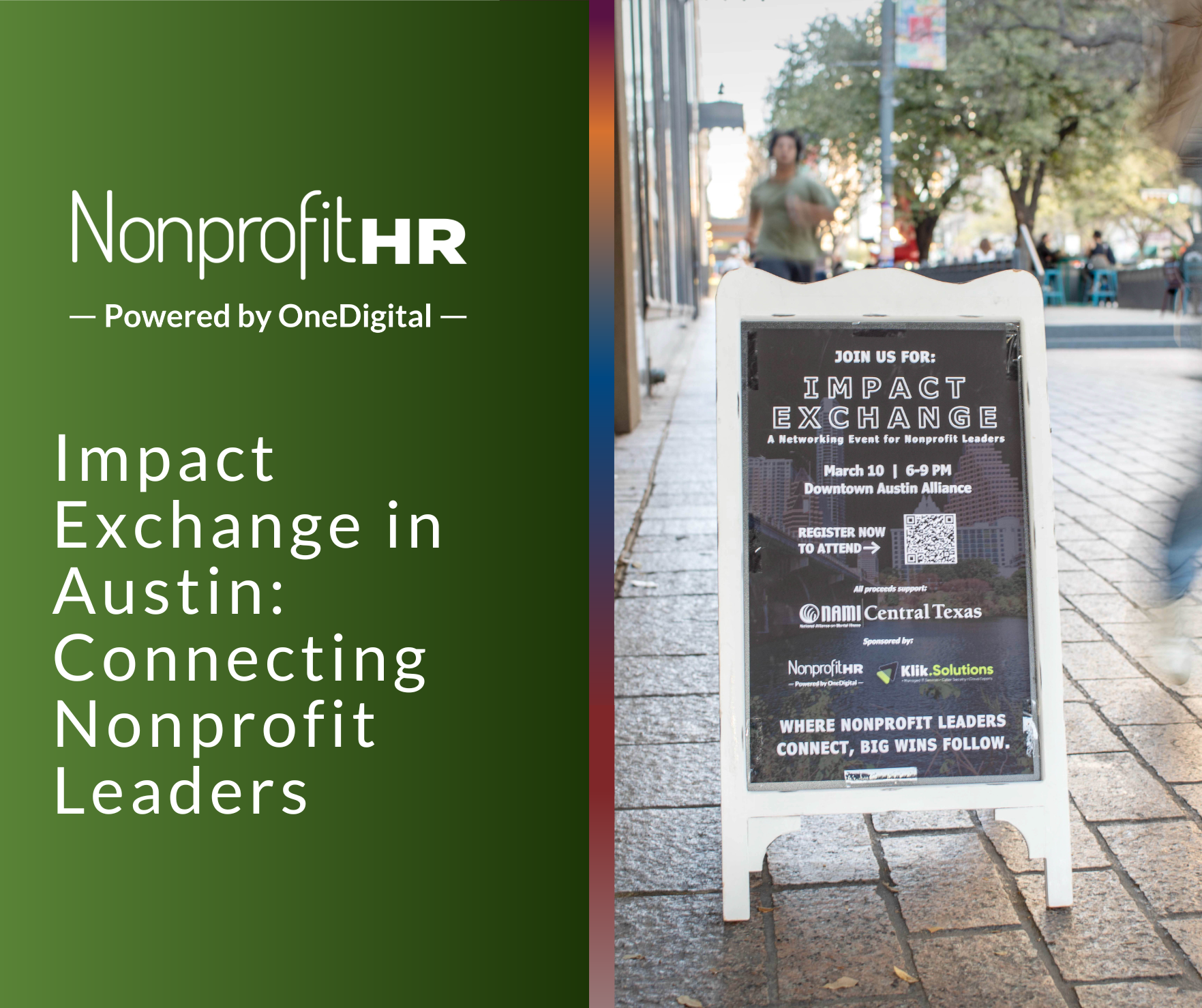WTOP: 5 ways nonprofits can…
We received a large number of questions from participants in our webinar, Three Things Your Organization’s HR Assessment Should Reveal, so our Strategy & Advisory experts are here to weigh in. This is Part 3 in the webinar recap series.
In Part 2, Shelbie Webster, Senior Consultant, Strategy & Advisory, and Suana Watson, Consultant, Strategy & Advisory, revealed the dynamics of an HR assessment and an action plan to maximize its impact. In Part 3, they share insights on HR assessments.
Plus, access the webinar recording now to hear Shelbie and Suana walk through the #1 thing an HR assessment reveals, where you can immediately elevate your organization’s HR practices, procedures, workflows and ways to ensure your human resources strategy aligns with the overall organizational strategy and goals.
HR assessments deliver in-depth, strategic analyses of your organization’s HR function, uncovering core elements of your workplace policies, programs and practices. HR assessments form the foundation for aligning talent management with organizational values, empowering staff and fostering stability so everyone can be mission focused. HR assessments also craft strategic talent management blueprints two-to-five years out to keep organizations future-focused.
What is the best time of the year for an organization to undergo an HR assessment?
Determining the optimal timing for an HR assessment is a nuanced process. It’s not about whether January trumps July or vice versa; it hinges on your organization’s unique priorities. Clients approach Nonprofit HR year-round seeking assistance with HR assessments. As we come to the fourth quarter, there’s a surge of activity as organizations gear up for next year. Many are reaching out to harness the power of HR assessments to shape their 2024 agendas and chart a course for a more impactful future.
Does organization size introduce any limitations?
The dimensions of organizational size need not impede your journey toward HR excellence. For example, we collaborate with diverse entities ranging from solo practitioners to larger teams numbering from three to over a hundred. The crux lies in your ability to conduct in-depth assessments based on the seven core focus areas, and offer insights into strength and opportunity areas with prioritized recommendations. Size may vary, but the commitment to enhancing core HR functionalities remains unwavering.
Read more about the seven core HR assessment focus areas in Part 1 of this series.
Further than focusing on size, focus on function and ask: Is my HR department functioning in a way that supports my mission and people? If the answer is no, an HR assessment would be helpful. It can be a team of one or 201. It wouldn’t matter as long as HR functions, which is what we’re reaching for.
What is Nonprofit HR’s background and experience in helping HR and leadership communicate anticipated changes or alleviate anxiety due to undergoing an HR assessment?
If you partner with a third party, communicating that the assessment is collaborative and employee input is valued can reduce anxiety about having someone external measure their talent. Talking to employees one-on-one and conducting focus groups and surveys builds buy-in.
HR assessments can be overwhelming, particularly during the kickoff and data-gathering process, as stakeholders learn the results. However, by partnering closely with stakeholders and defining a clear project plan, third-party consultants — through proactive communication and continuous feedback — can demonstrate alignment with the organization and put stakeholders at ease.
Assessments are most effective when you partner with the HR department in a supportive setting and communicate that the goal is to help them identify opportunities for improvement.
In an HR assessment, is it best practice to engage with staff outside of payroll and finance and, if so, what does that look like?
Involving key stakeholders from across the organization is essential, as it fosters a 360° feedback loop, and facilitates alignment, adoption and success. The process begins by identifying individuals from staff, team leaders and C-suite from various departments who will play a pivotal role in the assessment. Using a flexible approach with a range of engagement options will foster connection, and make adoption and engagement smoother.
Harnessing insights from all personnel closely intertwined with your HR function will expand the conversation to a broader spectrum of stakeholders. Surveying their HR interactions results in a holistic understanding of their preferences, concerns and desired improvements. In practice, this inclusive approach affects everyone in the organization, as HR plays a role in every employee’s professional journey.
Do you make recommendations regarding the structure of HR services in organizations?
HR assessment is critical to evaluating the effectiveness of an organization’s HR structure. However, recommendations will vary depending on the organization’s specific needs. Focusing first on practices, procedures and workflows will identify areas where HR structure doesn’t support organizational goals. After identifying opportunities for improvement, shifting focus to structure will generate change recommendations to promote organizational alignment.
In some cases, a simple adjustment to the structure may be sufficient, such as adding a new HR role or merging two functions. In other cases, you may require a more significant restructuring. The recommendations depend on the findings and unique needs of the organization.
How has artificial intelligence (AI) changed or enhanced the assessment process?
The infusion of AI into HR assessment systems and processes is a positive development. AI is revolutionizing HR assessment, and being part of the journey is fun. AI enables us to efficiently gather, encode and validate data, providing reliable results and recommendations. AI accelerates the assessment process to 90 days, compared to six to eight months with traditional methods.
What is the average timeframe to complete an HR assessment?
The average HR assessment timeframe varies based on the approach. Our standard assessments, for example, typically last eight to 12 weeks. Mini assessments, focused on two critical issues to solve urgently, take four to six weeks, while the more extended process delves into the seven focus areas and year-long solutions.
What are some common mistakes you see HR professionals make when implementing assessment-related challenges? What advice would you give to those completing an assessment for the first time?
One significant misstep is the tendency for organizations to delay taking immediate action. In such cases, assessments collect dust on a shelf, losing momentum. Consider that, post-assessment, there are results, engaged stakeholders and an action plan ready. Maintaining momentum and providing consistent, continuous feedback on timelines, progress and encountered bottlenecks will empower you to harness the full potential of an HR assessment.
Another mistake is not prioritizing recommendations, which enables you to validate what you think you heard and know from the assessment. At the end of our HR assessment report, for example, we provide recommendations that help you focus on what’s most important: what’s on fire to extinguish first. Prioritization allows you to slow down and put things on the back burner to remove the burden of doing everything simultaneously.
How do you combat internal burnout while acknowledging the need to focus on conducting an HR assessment?
The challenge of burnout is real. Adopting a strategic approach with a well-structured plan and focusing on small, manageable priorities will enable you to combat burnout and sustain momentum. Making high-risk areas a priority and considering structural changes to balance the workload not only prevents the loss of staff with valuable institutional knowledge, but also revitalizes the HR department.
I refer to this as trying to build a plane while flying it. Designing a structure that accommodates your current needs that is adaptable for future expansion will ensure your organization’s agility and readiness. Building a solid case for support or structural change will set you up for harmonious and aligned organizational growth.
What do you recommend for an organization that is going through a major culture shift? Is this an appropriate time for an HR assessment?
Deciding on the right timing for an HR assessment during a significant cultural shift is a nuanced challenge. It depends on the unique circumstances and upcoming changes within your organization. Consider a more suitable moment if your workforce is already grappling with change or survey fatigue. However, if a lack of strategic direction or talent management challenges drive the cultural shift, an HR assessment can provide the insights needed to bring stability and guide the way forward. It’s about finding the opportune moment for clarity and action.
Conclusion
The HR assessment is a powerful tool for organizations of all sizes to identify and address areas for improvement. They can help organizations align their talent management strategies with their overall business goals, empower their staff and create a more stable and mission-focused workplace.
As we have seen in this blog post, nonprofits can leverage HR assessments to address a wide range of challenges, including:
- Optimizing HR structure and organizational alignment
- Improving HR practices, procedures and workflows
- Identifying and developing talent
- Creating a more inclusive and supportive workplace culture
- Navigating cultural shifts
If you are on a path toward conducting an HR assessment, consider partnering with a highly qualified third-party consultant to ensure a comprehensive, objective assessment. We’re here to help! Schedule a mini consult today.
Contributing Authors
|
|
Shelbie Webster
Senior Consultant,
Strategy & Advisory
|
Suana Watson
Consultant,
Strategy & Advisory
|































